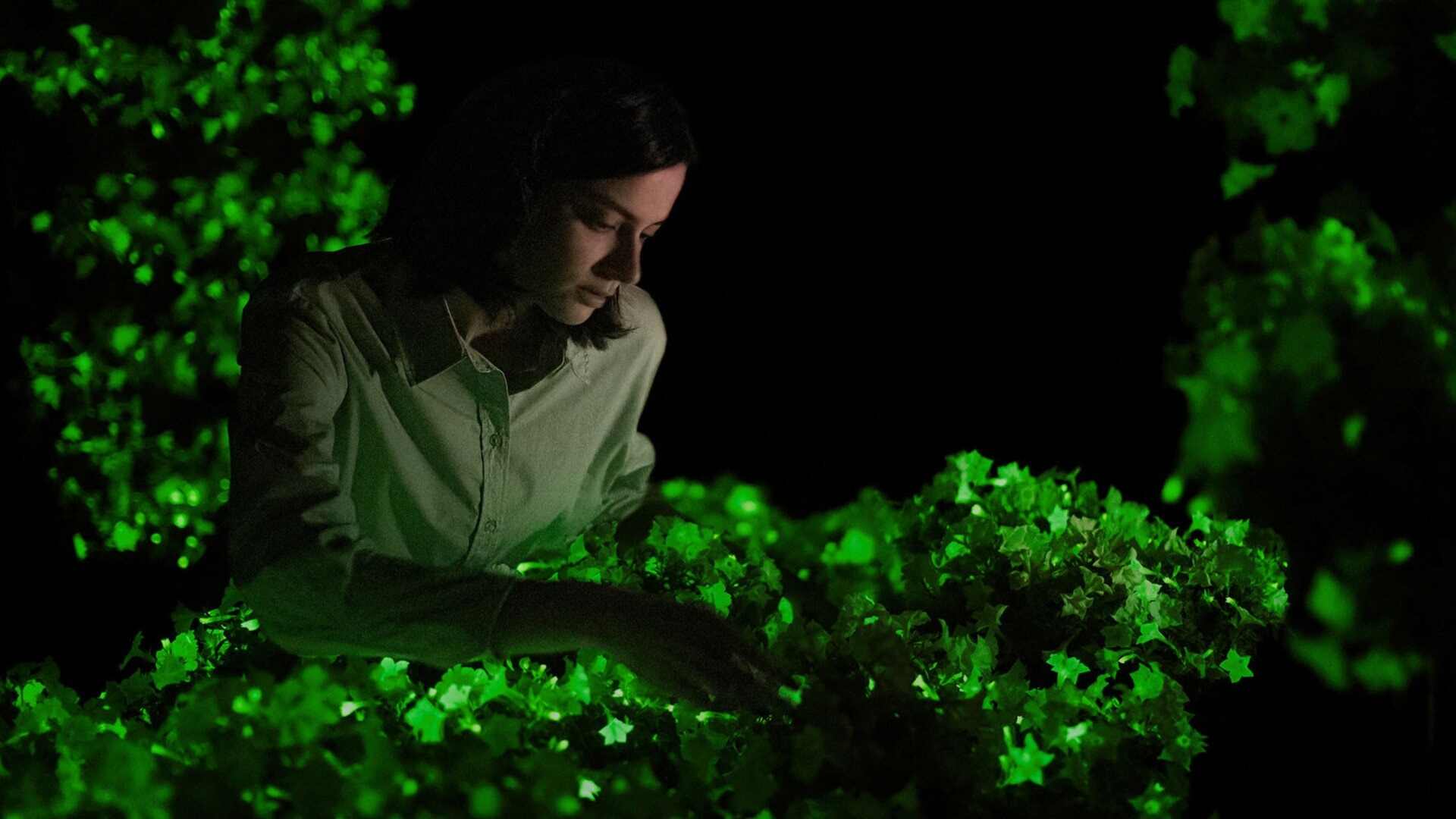- | 8:00 am
Glow-in-the-dark petunias are just the beginning
After three decades of science, Light Bio figured out how to engineer a bioluminescent petunia. Next up: glowing roses, houseplants, and bouquets.

If you’ve spent any time on the internet over the past few weeks, you’ve probably stumbled upon the glow-in-the-dark petunia that scientists genetically engineered to emit a continuous green glow.
The U.S. Department of Agriculture approved the so-called firefly petunia in September 2023, and already it has become an internet sensation. More than 50,000 people preordered the plant, and first batches started shipping out last week.
But if all goes according to plan for the company behind it—an Idaho-based startup called Light Bio—those petunias are only the beginning. Next up: more petunias, with different-colored flowers, stripes, and an even brighter glow. You can also expect glowing roses, glowing houseplants, glowing bouquets, and—maybe a few decades from now—flowers that light up at the touch of your finger. “We think that everything you see in Avatar, we could make,” says the company’s CEO, Keith Wood.

“GROWING” GLOW-IN-THE-DARK PLANTS
The road to glowing flowers began in 1986, when Wood and a team of other researchers developed the world’s first bioluminescent plant. The scientists modified a tobacco plant by inserting luciferase, a light-emitting enzyme found in fireflies.
The team wasn’t after commercial success at the time; the aim was to understand exactly how plants use genes to grow and develop. Wood says that luciferase from a firefly is quick and easy to measure. Plant biologists can “attach” the enzyme to another gene of interest so it can light up (literally) when the other gene is active. The achievement was reported in The New York Times, accompanied by a photo of a tobacco leaf exposed to a photographic film in the dark.
As the article suggests, the plant’s glow was visible only in the dark. Back then scientists had to spray it with a chemical substrate known as luciferin to get it to glow. But people didn’t want to have to spray their plant. They wanted a plant that could glow on its own.

Light Bio is not the only company to have worked on glowing plants, but it is the first to bring one to market. Scientists at Stony Brook University made a self-glowing plant in 2010 using genes from bioluminescent marine bacteria; they found that the light was too dim. Entrepreneur Antony Evans turned glowing plants into a Kickstarter campaign in 2013 that raised close to half a million dollars but eventually failed to deliver. Four years later, in 2017, engineers at the Massachusetts Institute of Technology attempted their own version, but the plant could glow for only 3.5 hours before it had to be submerged in a special liquid.
THE SECRET INGREDIENT TO GLOW-IN-THE-DARK PLANTS
The tide shifted in 2018, when Karen Sarkisyan, a synthetic biologist who later cofounded Light Bio, identified a group of genes from the bioluminescent mushroom called Neonothopanus nambi. Together with an international team of scientists, he inserted those genes into a tobacco plant, and it glowed brightly, with no assistance.
There’s a reason that N. nambi mushroom genes work better than the firefly enzymes, and it’s the same reason why you (hopefully) get along better with your spouse than with your ex: compatibility.
“If you look at the biochemical details of how mushrooms make light, there is a great deal of similarity between that and how the basic metabolism in plants work,” Wood explains. “That’s when I knew this very long-standing desire to make glowing plants would become possible.”
So the team set their sights on petunias, not only for their popularity but also because they are a close relative to the tobacco plant (and therefore share a similar molecular biology). Plus, petunias are not considered an invasive species, so the chances of modified genes spreading to native plants are slim.
GLOWING PLANTS IN YOUR LIVING ROOM
As you’re reading this, the first firefly petunias are probably traveling from the company’s greenhouse in Michigan to customers living somewhere warm enough to welcome them. But the Light Bio team is already thinking ahead. The first step, Wood says, is to create a better set of enzymes that would make the plants glow even brighter—not too bright that the energy burden becomes a health problem for the plant, but bright enough to create a light that is “enchanting.” (The glow comes from within the plant, so the healthier your petunia is, the brighter it will glow.)

Once the team has improved the enzymes, the “molecular building blocks” will be there to create a wider variety of potted plants, houseplants, and—because these plants can glow as long as they’re alive—cut flowers (so you can make a solid first impression on a date).
The hope is that as early as next year Light Bio can offer petunias with different-colored flowers (the current version comes in white). Wood says they can also make petunias that glow in different colors, though every time the team changes a plant’s molecular biology, they will need USDA approval all over again.
We might be many years away from the dazzling world of Avatar, but if the company’s success with the firefly petunia is any indication, the stigma that once surrounded genetically engineered plants may not be as insurmountable as it once seemed. All it took was a really cool, glow-in-the-dark plant.








































